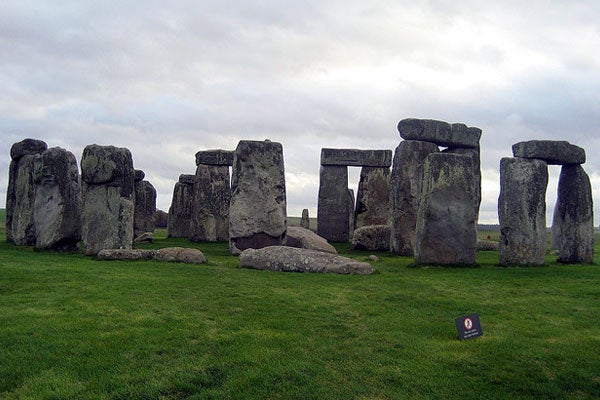
Stonehenge is perhaps the most popular and recognizable of the Neolithic and Bronze Age monuments in England (photo by Wally Gobetz via flickr)
Today's Europe the result of massive Bronze-age migration from Asia
Published: June 15, 2015
One of the largest DNA studies of ancient humans to date has found that the genetic makeup of Europe’s current populations is the result of a massive migration from western Asia during the Bronze Age – and that lactose tolerance developed later than experts previously believed.
Published June 11 in Nature, the study examined DNA from 101 ancient humans from across Eurasia and drew on the expertise of researchers around the world, including Paul Duffy, a Bronze Age archaeologist at the University of Toronto's department of anthropology.
“Archaeologists have long argued about how cultural changes and technologies spread from place to place, whether through migration or simply through circulation of ideas when visitors pass through a region” said Duffy. “We found genetic evidence for a large migration of people from north of the Black Sea into Eastern, Central and Western Europe beginning around 2,800 BC.”
The study, titled “Population genomics of Bronze Age Eurasia,” also lends support to a long-standing theory that Indo-European languages spread to Europe from Asia during the third millennium BC, said Duffy.
The period was a time of major cultural changes in Europe. The archaeological record shows new burial practices, chariots built for travel, breeding and training of horses, and the production of sophisticated new weapons. These are all characteristics rooted in the Yamnaya steppe herders of Western Russia and the Sintashta culture that emerged around 2,000 BC in the Ural Mountains that form the natural boundary between Europe and Asia.
Previous studies have been restricted to single or a few individuals because of the degraded nature of the ancient DNA, making sequencing costly and time-consuming. This study, led by researchers at the Center for GeoGenetics at the University of Copenhagen, employed new DNA retrieval methods, allowing scientists to examine the large number of specimens. The 101 specimens the researchers studied spanned the entire Bronze Age, and even included some from the Late Neolithic era before it and the Iron Age period that followed.
The DNA analysis showed that the European and Central Asian gene pools towards the end of the Bronze Age mirror present-day Eurasian genetic structure to an extent not seen in previous studies of the Paleolithic, Mesolithic and Neolithic populations that came before the Bronze Age. The results imply that much of the basis of the Eurasian genetic landscape of today was formed during the complex patterns of expansions and population replacements during the Bronze Age.
The large sample size enabled researchers to select several genetic variants for deeper examination, one of which was the gene associated with lactose tolerance.
“We were surprised to find a low frequency of the gene in Bronze Age Europeans – approximately 10 per cent,” said Duffy. “It indicates that the spread of a mutation that allows humans to digest milk was only beginning during the Bronze Age and may have originated in the Bronze Age steppe cultures as they showed the highest frequency of the lactose tolerant gene among ancient groups.”
Analysis for skin and eye colour revealed that light skin pigmentation and blue eyes were prevalent by the beginning of the Bronze Age, having established themselves in the course of the previous 3,000 years.
“Our findings also support the theory that Indo-European languages expanded into Europe during the Bronze Age, something historical linguists and some archaeologists have said for a long time,” said Duffy. He pointed to root words such as yoke, wheel and cart that are shared across Slavic, Germanic and Romance languages, and would have been common among populations from the steppes.
“Our data suggests the migrating people brought with them their language and shared it as they settled across Europe.”



